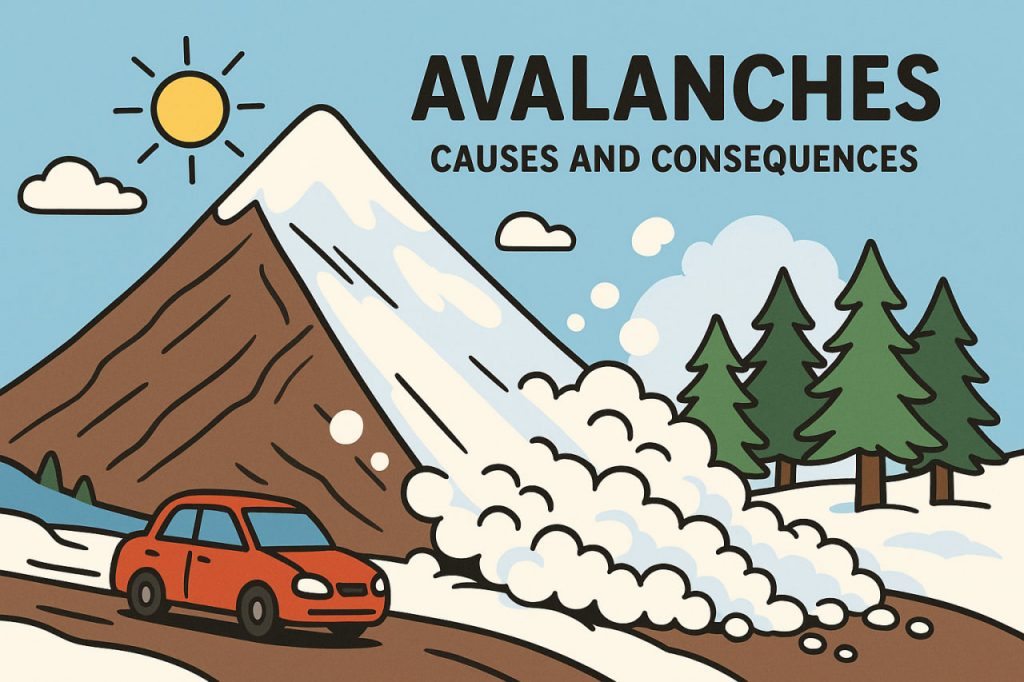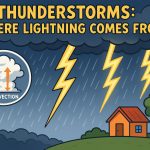Avalanches are rapid flows of snow down a mountainside, often triggered by natural forces or human activity. While they can appear sudden and unpredictable, avalanches usually result from a combination of conditions building up over time. In mountain regions around the world, they pose serious threats to human life, infrastructure, and ecosystems.
What Causes Avalanches?
Avalanches occur when the force of gravity overcomes the stability of snow on a slope. Several factors contribute to this instability:
- Snow accumulation: Heavy snowfall can overload weak snow layers beneath.
- Slope angle: Most avalanches occur on slopes between 30° and 45°.
- Snow layering: Differences in snow temperature, density, or moisture between layers can lead to weak bonds.
- Weather conditions: Rapid warming, rain on snow, or strong winds that redistribute snow all increase risk.
- Human activity: Skiers, snowboarders, or hikers can trigger avalanches simply by passing through unstable areas.
Types of Avalanches
There are several types of avalanches:
- Slab avalanches: Large blocks of cohesive snow break away from underlying layers. These are the most dangerous.
- Loose snow avalanches: Begin at a single point and spread as they descend.
- Wet avalanches: Caused by melting snow or rain that loosens snowpack.
Each type has different dynamics but all can be hazardous depending on terrain and conditions.
Consequences for People and Nature
Avalanches can be deadly. Victims may be buried under meters of snow, with only minutes to survive due to suffocation or injuries. Roads, ski resorts, mountain villages, and hiking trails are often affected. Economically, avalanches can disrupt tourism and transportation.
They also affect the natural environment. Avalanches clear large swaths of forest, damage habitats, and alter water flows. However, in some cases, they play a role in maintaining alpine ecosystems by recycling nutrients.
Warning Systems and Risk Reduction
Modern technologies help reduce avalanche risk. Forecasting systems use weather data, snow analysis, and remote sensors to predict danger levels. Avalanche control involves artificial triggering (e.g., explosives) in high-risk areas before large-scale buildup can occur.
Rescue teams, snow patrols, and trained dogs are part of safety protocols in mountainous areas. Wearing an avalanche beacon, carrying a probe and shovel, and knowing how to read terrain are critical for those exploring snowy mountains.
How to Stay Safe
To avoid avalanche danger:
- Always check official avalanche forecasts.
- Avoid steep, wind-loaded slopes after snowstorms or rapid warming.
- Never travel alone in avalanche-prone areas.
- Take avalanche safety courses and learn rescue techniques.
Knowledge, preparation, and caution can save lives in snowy terrain.
Glossary
- Avalanche – A mass of snow, ice, and debris rapidly descending a slope.
- Slab avalanche – A type where a large sheet of snow breaks loose.
- Snowpack – Layers of snow accumulated over time.
- Forecasting systems – Tools used to predict natural hazards like avalanches.
- Avalanche beacon – A wearable device used to locate people buried under snow.
- Snow layering – The structure and condition of snow in different layers.


